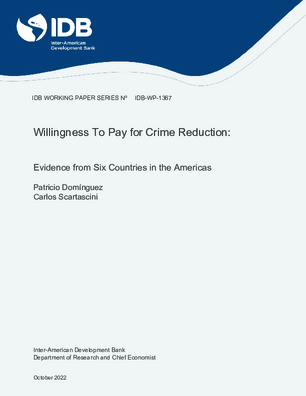Willingness to pay for crime reduction: evidence from six countries in the Americas
Date
Oct 2022
Crime levels are a perennial development problem in Latin America and a renewed concern in the United States. At the same time, trust in the police has been falling, and questions abound about citizens' willingness to support government efforts to fight crime. We conduct a survey experiment to elicit willingness to contribute toward reducing crime across five Latin American countries and the United States. We compare homicide, robbery, and theft estimates and find a higher willingness to contribute for more severe crimes and for higher crime reductions. In addition, we examine the role of information on the willingness to contribute by conducting two experiments. First, we show that exposing respondents to crime-related news increases their willingness to pay by 5 percent. Furthermore, while we document a 7 percent gap in willingness to pay for crime reduction between people who under- and over-estimate the murder rate, we find that this gap can be wholly eliminated by informing them about the actual level of crime. On average, our estimates suggest that households are willing to contribute around $140 per year for a 20 percent reduction in homicide. This individual-level predisposition would translate into additional investment in public security efforts of up to 0.5 percent of GDP.




